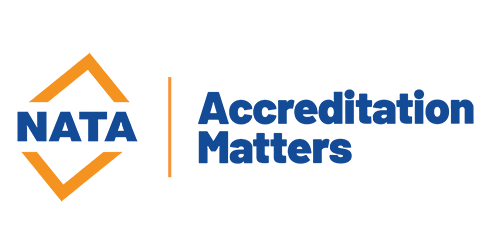
National Association of Testing Authorities, Australia
Scope of Accreditation
APR Laboratory Pty Ltd
Site
Australian Photometry and Radiometry Laboratory
Accreditation No.
15508
Site No.
16453
Date of Accreditation
25 Jun 2007
Contact
Availability
Services available to external clients
Scope of Accreditation
ISO/IEC 17025 (2017)
Calibration
- The uncertainty of measurement is reported as an expanded uncertainty having a level of confidence of 95% unless stated otherwise
| Service | Product | Determinant | Technique | Procedure | Limitations | ||||||||||||||||||||||||||||||||||||||||||||||||||||||||||||||||||||||||||||||||||||||||||||||
|---|---|---|---|---|---|---|---|---|---|---|---|---|---|---|---|---|---|---|---|---|---|---|---|---|---|---|---|---|---|---|---|---|---|---|---|---|---|---|---|---|---|---|---|---|---|---|---|---|---|---|---|---|---|---|---|---|---|---|---|---|---|---|---|---|---|---|---|---|---|---|---|---|---|---|---|---|---|---|---|---|---|---|---|---|---|---|---|---|---|---|---|---|---|---|---|---|---|---|---|
| Optical metrology - Optical measuring equipment | Blue light radiometers; UVA meters; UVC meters; Ultraviolet radiometers | Cosine correction; Irradiance; Linearity; Responsivity | Comparison with a reference meter | ||||||||||||||||||||||||||||||||||||||||||||||||||||||||||||||||||||||||||||||||||||||||||||||||
|
Capability With Calibration and measurement capability of- Irradiance 6.5% from 10 to 500 μW/cm2 for UVA; Broadband responsivity 1.5% Response linearity 1.5% in the range 0.5 to 10 lux; Cosine correction 1.0% in range 0 to 30 º; |
|||||||||||||||||||||||||||||||||||||||||||||||||||||||||||||||||||||||||||||||||||||||||||||||||||
| Illuminance meters; Light meters; Luxmeters; Photometers | Cosine correction; Illuminance; Linearity; Responsivity | Comparison with a reference meter | |||||||||||||||||||||||||||||||||||||||||||||||||||||||||||||||||||||||||||||||||||||||||||||||||
|
Capability With Calibration and measurement capability of- Illuminance; 0.6% from 0.1 to 5 lux; Broadband responsivity; 1.5% Response linearity; 1.5% in the range 0.5 to 10 lux; Cosine correction; 1.0% in range 0 to 30 º; |
|||||||||||||||||||||||||||||||||||||||||||||||||||||||||||||||||||||||||||||||||||||||||||||||||||
| Luminance meters | Luminance | Direct comparison against a reference meter |
from 1 to 12 000 cd/m2 ; |
||||||||||||||||||||||||||||||||||||||||||||||||||||||||||||||||||||||||||||||||||||||||||||||||
|
Capability With Calibration and measurement capability of- 1.5% from 1 to 4000 cd/m2 ; |
|||||||||||||||||||||||||||||||||||||||||||||||||||||||||||||||||||||||||||||||||||||||||||||||||||
| Photodiodes; Photometric detectors | Linearity; Responsivity | Comparison with a reference meter |
Response linearity from 0.5 to 150 000 lux |
||||||||||||||||||||||||||||||||||||||||||||||||||||||||||||||||||||||||||||||||||||||||||||||||
|
Capability With Calibration and measurement capability of- Broadband responsivity 1.5% Response linearity |
|||||||||||||||||||||||||||||||||||||||||||||||||||||||||||||||||||||||||||||||||||||||||||||||||||
| Tricolorimeters | Chromaticity; Luminance | Direct measurement using a reference standard | |||||||||||||||||||||||||||||||||||||||||||||||||||||||||||||||||||||||||||||||||||||||||||||||||
|
Capability Calibration of incident light tristimulus colorimeters; With Calibration and measurement capability of- 1.5% from 1 to 4000 cd/m2 ; |
|||||||||||||||||||||||||||||||||||||||||||||||||||||||||||||||||||||||||||||||||||||||||||||||||||
| Optical metrology - Optical measuring equipmentincluding on site calibrations | Spectroradiometers | Responsivity; Wavelength | Direct comparison against a reference spectrometer; Direct measurement using a reference standard |
from 360 nm to 830 nm; |
|||||||||||||||||||||||||||||||||||||||||||||||||||||||||||||||||||||||||||||||||||||||||||||||
|
Capability Calibration in the laboratory and on-site; With a Calibration and Measurement Capability of- |
|||||||||||||||||||||||||||||||||||||||||||||||||||||||||||||||||||||||||||||||||||||||||||||||||||
| Optical metrology - Optical standards and reference equipment | Diffuse reflectance plates | Reflectance | Direct measurement using a reference meter; Indirect measurement using a spectrophotometer and software integration | ||||||||||||||||||||||||||||||||||||||||||||||||||||||||||||||||||||||||||||||||||||||||||||||||
|
Capability With Calibration and measurement capability of- Spectral reflectance; 2.5% of measured value or 0.0025 (whichever is greater) from 380 to 410 nm; |
|||||||||||||||||||||||||||||||||||||||||||||||||||||||||||||||||||||||||||||||||||||||||||||||||||
| Discharge sources - Lamps; Incandescent lamps; LED sources; Solid state lighting (SSL) sources | Chromaticity | Direct measurement using a reference colorimeter; Direct measurement using a reference spectrophotometer | |||||||||||||||||||||||||||||||||||||||||||||||||||||||||||||||||||||||||||||||||||||||||||||||||
|
Capability With Calibration and Measurement Capability of- 0.001 in x; |
|||||||||||||||||||||||||||||||||||||||||||||||||||||||||||||||||||||||||||||||||||||||||||||||||||
| Correlated colour temperature | Direct measurement using a reference meter | ||||||||||||||||||||||||||||||||||||||||||||||||||||||||||||||||||||||||||||||||||||||||||||||||||
|
Capability With Calibration and Measurement Capability of- for incandescent sources; |
|||||||||||||||||||||||||||||||||||||||||||||||||||||||||||||||||||||||||||||||||||||||||||||||||||
| Spectral irradiance | Direct measurement using a reference spectrophotometer |
from 250 nm to 1000 nm; |
|||||||||||||||||||||||||||||||||||||||||||||||||||||||||||||||||||||||||||||||||||||||||||||||||
|
Capability With Calibration and measurement capability of- 5.5% of measured value from 250 to 280 nm; |
|||||||||||||||||||||||||||||||||||||||||||||||||||||||||||||||||||||||||||||||||||||||||||||||||||
| Discharge sources - Lamps; LED sources; Solid state lighting (SSL) sources; UVC sources | Broadband irradiance | Direct measurement using a reference meter |
from 50 to 2000 μW/cm2 for UVC sources |
||||||||||||||||||||||||||||||||||||||||||||||||||||||||||||||||||||||||||||||||||||||||||||||||
|
Capability With Calibration and measurement capability of- 4.0% from 50 to 500 μW/cm2 for UVC sources; |
|||||||||||||||||||||||||||||||||||||||||||||||||||||||||||||||||||||||||||||||||||||||||||||||||||
| Filters | Chromaticity; Transmittance | Comparison with a reference meter | |||||||||||||||||||||||||||||||||||||||||||||||||||||||||||||||||||||||||||||||||||||||||||||||||
|
Capability With Calibration and measurement capability of- Broadband Transmittance; 0.5% of measured value; Spectral Transmittance; 3.0% of measured value in the range 0.200 to 1.000 from 280 to 315 nm; Chromaticity of filters and surfaces: 0.001 in x |
|||||||||||||||||||||||||||||||||||||||||||||||||||||||||||||||||||||||||||||||||||||||||||||||||||
| Incandescent lamps; LED sources; Solid state lighting (SSL) sources | Luminous intensity | Direct measurement by goniophotometer; Direct measurement using a reference meter | |||||||||||||||||||||||||||||||||||||||||||||||||||||||||||||||||||||||||||||||||||||||||||||||||
|
Capability With Calibration and Measurement Capability of- Incandescent lamps; 0.7%; LED and other Solid State Lighting sources; 1.2%; |
|||||||||||||||||||||||||||||||||||||||||||||||||||||||||||||||||||||||||||||||||||||||||||||||||||
| Luminous flux | Direct measurement by goniophotometer; Direct measurement by integrating sphere | ||||||||||||||||||||||||||||||||||||||||||||||||||||||||||||||||||||||||||||||||||||||||||||||||||
|
Capability With Calibration and Measurement Capability of- Incandescent lamps; 1.5% above 10 lm; LED and other Solid State Lighting sources; 1.5% above 10 lm; |
|||||||||||||||||||||||||||||||||||||||||||||||||||||||||||||||||||||||||||||||||||||||||||||||||||
| Illuminance | Direct measurement using a reference meter |
From 0.5 to 150 000 lux; |
|||||||||||||||||||||||||||||||||||||||||||||||||||||||||||||||||||||||||||||||||||||||||||||||||
|
Capability With Calibration and measurement capability of- 0.7% in the range 0.5 to 3000 lux; |
|||||||||||||||||||||||||||||||||||||||||||||||||||||||||||||||||||||||||||||||||||||||||||||||||||
| Integrating sphere sources; Luminance standard sources | Luminance | Direct measurement using a reference meter |
from 1 to 4000 cd/m2 |
||||||||||||||||||||||||||||||||||||||||||||||||||||||||||||||||||||||||||||||||||||||||||||||||
|
Capability With Calibration and measurement capability of- 2% from 1 to 4000 cd/m2 |
|||||||||||||||||||||||||||||||||||||||||||||||||||||||||||||||||||||||||||||||||||||||||||||||||||
ISO/IEC 17025 (2017)
Manufactured Goods
| Service | Product | Determinant | Technique | Procedure | Limitations |
|---|---|---|---|---|---|
| Evaluation of consumer and industrial lighting, optical systems and eyewear | Advertising and information display lighting; Aviation signalling; General lighting - Fluorescent lamps; General lighting - Incandescent lamps; General lighting - LED and other solid state lamps; LED and other solid state lighting sources; Lighting for roads and public spaces; Monitors; Sky and sunlight; Traffic signalling and warning signs; Transient light sources including warning lights, beacons and variable message signs | Luminance | Not applicable |
SJ&A 3.1.4; |
Field measurement of luminance in the range 0 to 150 000 cd/m2; |
| Automotive lights; Aviation signalling; General lighting - Fluorescent lamps; General lighting - Incandescent lamps; General lighting - LED and other solid state lamps; High intensity discharge lamps; LED and other solid state lighting sources; Lighting for roads and public spaces; Maritime signalling; Railway signalling; Surgical and diagnostic lighting; Traffic signalling and warning signs | Chromaticity | Not applicable |
SJ&A 4.2; SJ&A 10.2; IES LM-79; |
||
| Automotive lights; Aviation signalling; General lighting - Fluorescent lamps; General lighting - Incandescent lamps; General lighting - LED and other solid state lamps; High intensity discharge lamps; LED and other solid state lighting sources; Lighting for roads and public spaces; Maritime signalling; Railway signalling; Surgical and diagnostic lighting; Traffic signalling and warning signs; UVA lamps and UVC lamps | Current; Power; Power AC and DC; Power factor; Voltage | Not applicable |
SJ&A 9; IES LM-79; |
||
| Automotive lights; LED and other solid state lighting sourcesincluding stop lamps; tail lamps; reversing lamps; indicator lamps; side and position markers; outline markers headlamps, motorcycle headlamps and gas discharge headlamps | Chromaticity; Distribution of luminous intensity | Not applicable |
ADR 1/00, 6/00, 45/01, 46/00, 48/00, 49/00, 50/00, 52/00, 53/00, 54/00, 55/00, 60/00, |
||
| Aviation signalling | Chromaticity; Distribution of luminous intensity | Not applicable |
ICAO Annex 14 Aerodromes Vol 1 - Design andOperations, 2013; |
||
| Eye protectors, filters and related eyewear for industrial applications; Sunglasses and related eyewear; Windows, windscreens and other safety glazing products | Spectral transmittance | Not applicable |
SJ&A 4.4; |
||
| Eye protectors, filters and related eyewear for industrial applicationsfilters and surfaces | Chromaticity | Not applicable | |||
| General lighting - Fluorescent lamps; General lighting - Incandescent lamps; General lighting - LED and other solid state lamps; High intensity discharge lamps; LED and other solid state lighting sources; Lighting for roads and public spaces; Surgical and diagnostic lighting | Distribution of luminous intensity | Not applicable |
IES LM-79; CIE 121 ; CIE S 025; |
Luminaires with maximum light emitting dimension not exceeding 800 mm; Excluding luminaires with discharge lamps; |
|
| Correlated colour temperature | Not applicable |
SJ&A 4.2; SJ&A 10.2; IES LM-79; |
|||
| General lighting - Fluorescent lamps; General lighting - Incandescent lamps; General lighting - LED and other solid state lamps; High intensity discharge lamps; LED and other solid state lighting sources; Lighting for roads and public spaces; Surgical and diagnostic lighting; UVA lamps and UVC lamps | Spectral irradiance | Not applicable |
SJ&A 4.2; SJ&A 10.2; IES LM-79 |
280nm to 830nm | |
| General lighting - Fluorescent lamps; General lighting - Incandescent lamps; General lighting - LED and other solid state lamps; LED and other solid state lighting sources; Lighting booths and lighting sources; Lighting for roads and public spaces Daylight simulators; | Illuminance | Not applicable |
SJ&A 3.2.3 |
Field measurement of Illuminance in the range 0.5 to 3000 lux; |
|
| General lighting - LED and other solid state lamps; LED and other solid state lighting sources | Luminous flux | Direct measurement by goniophotometer; Direct measurement by integrating sphere | by the methods of; SJ&A 7.5; SJ&A 10; IES LM-79; | by the method of goniophotometry with physical dimensions no greater than 0.5 m x 0.5 m x 0.4 m (LxWxH) and by the method using an integrating sphere with luminous dimension no greater than 150 mm | |
| Sunglasses and related eyewear | Blue light transmittance; Bridge strength; Dimensions; Haze; Lens retention; Luminous transmittance; Prismatic power; Refractive power; Resistance to ignition; Robustness; Solar transmittance; Spectral transmittance; Spectral transmittance in the UV-vis spectrum; Ultraviolet transmittance | Indirect measurement using a spectrophotometer and software integration; Measurement using a reference standard; Physical handling test; Visual examination |
AS/NZS 1067.1; AS/NZS 1067.2; Consumer Product Safety GN 37 - Sunglasses and fashion spectacles : 2017; |
Not including photochromic sunglasses |
|
| Traffic signalling and warning signsincluding arrowboard lamps | Chromaticity; Distribution of luminous intensity; Luminance | Not applicable |
AS/NZS 2144; AS 4852.1; AS 4852.2; AS 4192; EN 12966-1; AS 5156; SJ&A 3.1.4; EN 12066-1; |
||
| Windows, windscreens and other safety glazing productsflat non-fluorescent materials | Spectral reflectancediffuse reflectance | Not applicable |
by the methods of SJ&A 4.1.1; |
||
| Evaluation of consumer and industrial lighting, optical systems and eyewearField testing | Distribution photometer mirrors | Flatness; Relative luminous intensity; Spectral reflectance | Not applicable |
EN 13032-1 Annex C |
|
| Material performance evaluation of leather, textiles and related products | Sun protective textiles and clothing; Synthetic shade cloth | Spectral transmittance | Visual comparison |
SJ&A 4.4; |
The only data displayed is that deemed relevant and necessary for the clear description of the activities and services covered by the scope of accreditation.
Grey text appearing in a SoA is additional freetext providing further refinement or information on the data in the preceding line entry.
Accreditation No.
15508
Site No.
16453
Print date
27 Jul 2024
